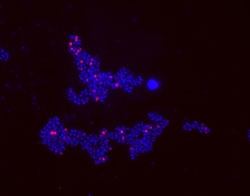Bacterial team up for survival
Bacteria in freshwater play an important role in breaking down organic carbon which serves as a primary food source for aquatic microorganisms. Their numbers are limited by bottom-up factors such as nutrients and substrates and top-down factors such as predators that shape the composition of bacterial populations. Bacteria have developed strategies to maximise their ability to compete for resources and resist predation. Researchers from the 'Community dynamics and phenotypic changes of limnic bacteria during experimental manipulation of bottom-up and top-down factors' (Complex) project investigated bacteria living in Lake Zurich, Switzerland. The impact of predation on the composition and metabolic versatility of model bacterial communities was evaluated as well as the response of isolates at close to natural conditions with and without grazing. Scientists observed the impact of adding a protist predator and a resistant competitor, or both of them at the same time to the lake water cultures. The presence of the predator reduced the total biomass of bacteria, but supported the overall diversity of bacterial species. Researchers also isolated up to 50 aggregating bacterial strains that gathered together into a mass to escape predation and tested them for their ability to escape grazing by predators – the phenomenon of co-aggregation. Using techniques such as flow cytometry to identify aggregation and 16S rRNA gene sequencing to genetically identify bacteria, the project researchers observed the extent and nature of aggregation to escape predation. Due to the huge amount of samples the team also developed specific analysis software to analyse the flow cytometric data. Complex project results could have far-reaching significance in all research fields that cover bacterial survival. Cooperation between bacterial strains, observed for the first time in an experimental system based on isolates common in natural waters, can be considered an efficient system for the preservation of rare bacteria. Microbial teamwork is also a potentially important condition for avoiding predation stress.






